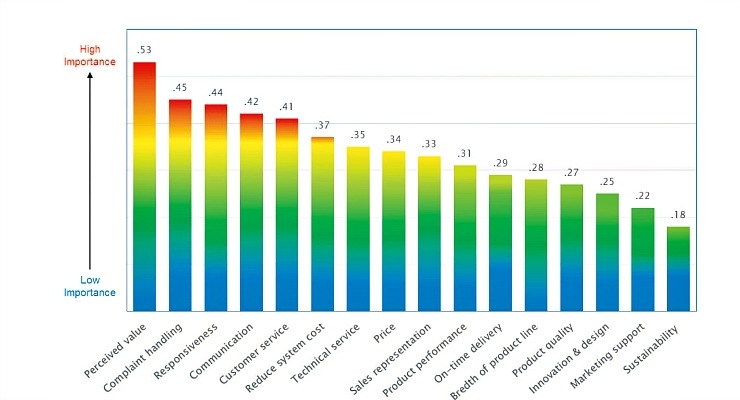12.29.15
Research conducted by Priority Metrics Group (PMG), a professional marketing consulting firm, found that service attributes, not product characteristics, are driving purchases of packaging containers, materials, equipment and supplies.
The company has conducted more than 40 proprietary research projects on behalf of packaging (materials, containers, equipment, supplies) suppliers over the past two decades. After interviewing more than 4,000 purchasers, PMG said they were able to identify a consistent pattern. The objective was not only to identify how buyers of packaging rank performance, but also to determine which of the categories are of higher importance.
“Some companies spend hundreds of thousands of dollars perfecting their product offering. But unless that innovation is dramatic and disruptive, what determines whether or not the sale will be made or the business retained, are service attributes,” said John Barrett, president, PMG. “A better mouse trap – if it does not bring added revenue or enhanced profit – will collect dust.”
Packaging buyers identify the most important of those such as responsiveness, communication, customer service and accessibility. Product attributes—including product quality, product performance, product line, equipment and systems, even innovation—are of lesser importance.
“It may come as a surprise to many in the packaging community that business is won, and enduring competitive advantage achieved, by building and maintaining strong personal relationships between the buyer and vendor,” said Barrett.
These relationships occur at multiple levels – senior management (business relationship), mid-management (communication, accessibility) and operational (responsiveness, customer service).
“Product quality and performance are more easily duplicated – by using the same equipment to produce the packaging components or buying from the same raw material suppliers. Service performance is much more difficult to replicate and consequently can lead to sustainable advantage,” Barrett explains.
Product improvement and innovation should be centered on delivering lower cost to customers. Price is something most suppliers do not want to use as a lever. However, helping customers to lower their total cost also can be a powerful way to establish and grow a long-term, profitable relationship.
Bar graph: PMG
The company has conducted more than 40 proprietary research projects on behalf of packaging (materials, containers, equipment, supplies) suppliers over the past two decades. After interviewing more than 4,000 purchasers, PMG said they were able to identify a consistent pattern. The objective was not only to identify how buyers of packaging rank performance, but also to determine which of the categories are of higher importance.
“Some companies spend hundreds of thousands of dollars perfecting their product offering. But unless that innovation is dramatic and disruptive, what determines whether or not the sale will be made or the business retained, are service attributes,” said John Barrett, president, PMG. “A better mouse trap – if it does not bring added revenue or enhanced profit – will collect dust.”
Packaging buyers identify the most important of those such as responsiveness, communication, customer service and accessibility. Product attributes—including product quality, product performance, product line, equipment and systems, even innovation—are of lesser importance.
“It may come as a surprise to many in the packaging community that business is won, and enduring competitive advantage achieved, by building and maintaining strong personal relationships between the buyer and vendor,” said Barrett.
These relationships occur at multiple levels – senior management (business relationship), mid-management (communication, accessibility) and operational (responsiveness, customer service).
“Product quality and performance are more easily duplicated – by using the same equipment to produce the packaging components or buying from the same raw material suppliers. Service performance is much more difficult to replicate and consequently can lead to sustainable advantage,” Barrett explains.
Product improvement and innovation should be centered on delivering lower cost to customers. Price is something most suppliers do not want to use as a lever. However, helping customers to lower their total cost also can be a powerful way to establish and grow a long-term, profitable relationship.
Bar graph: PMG













